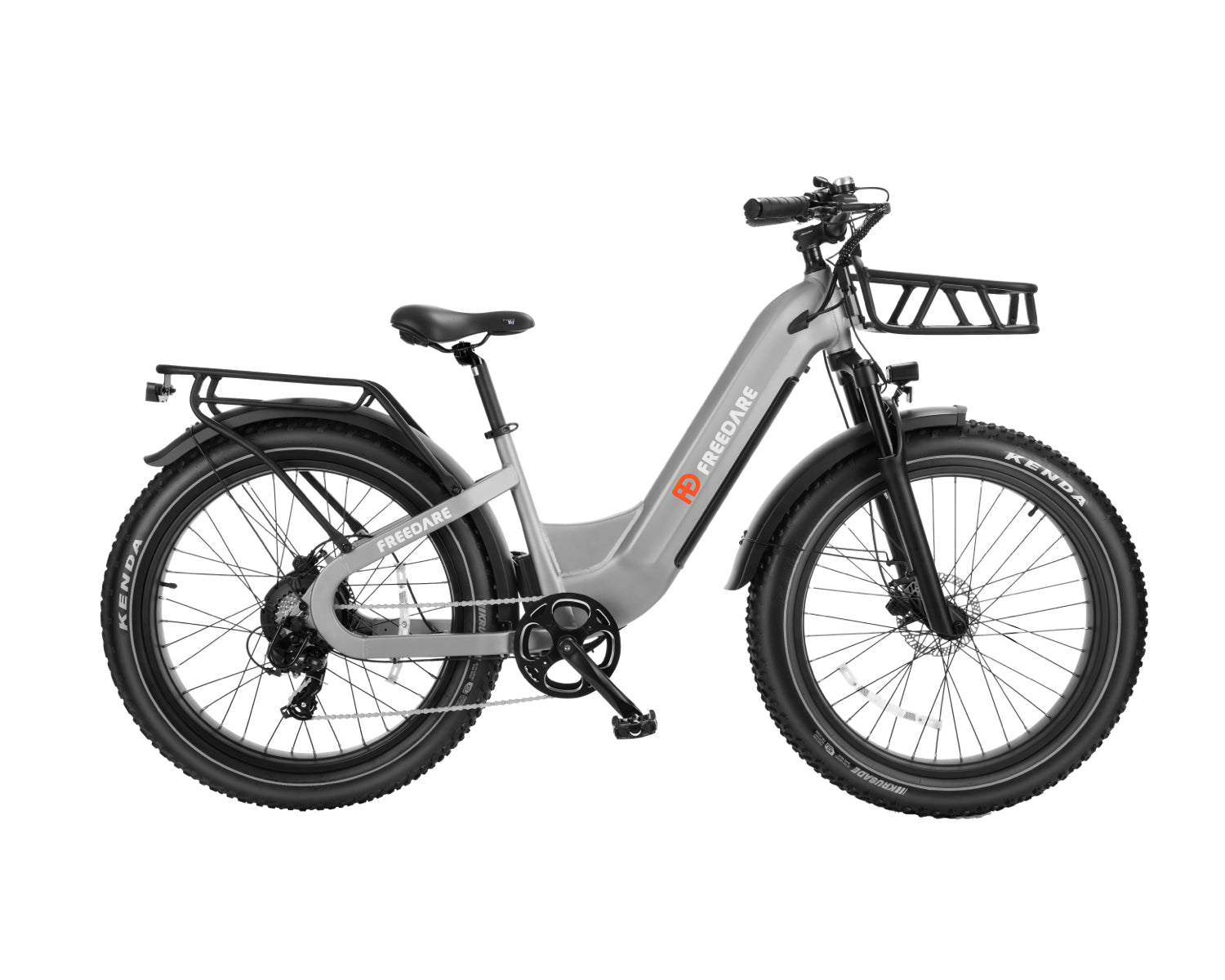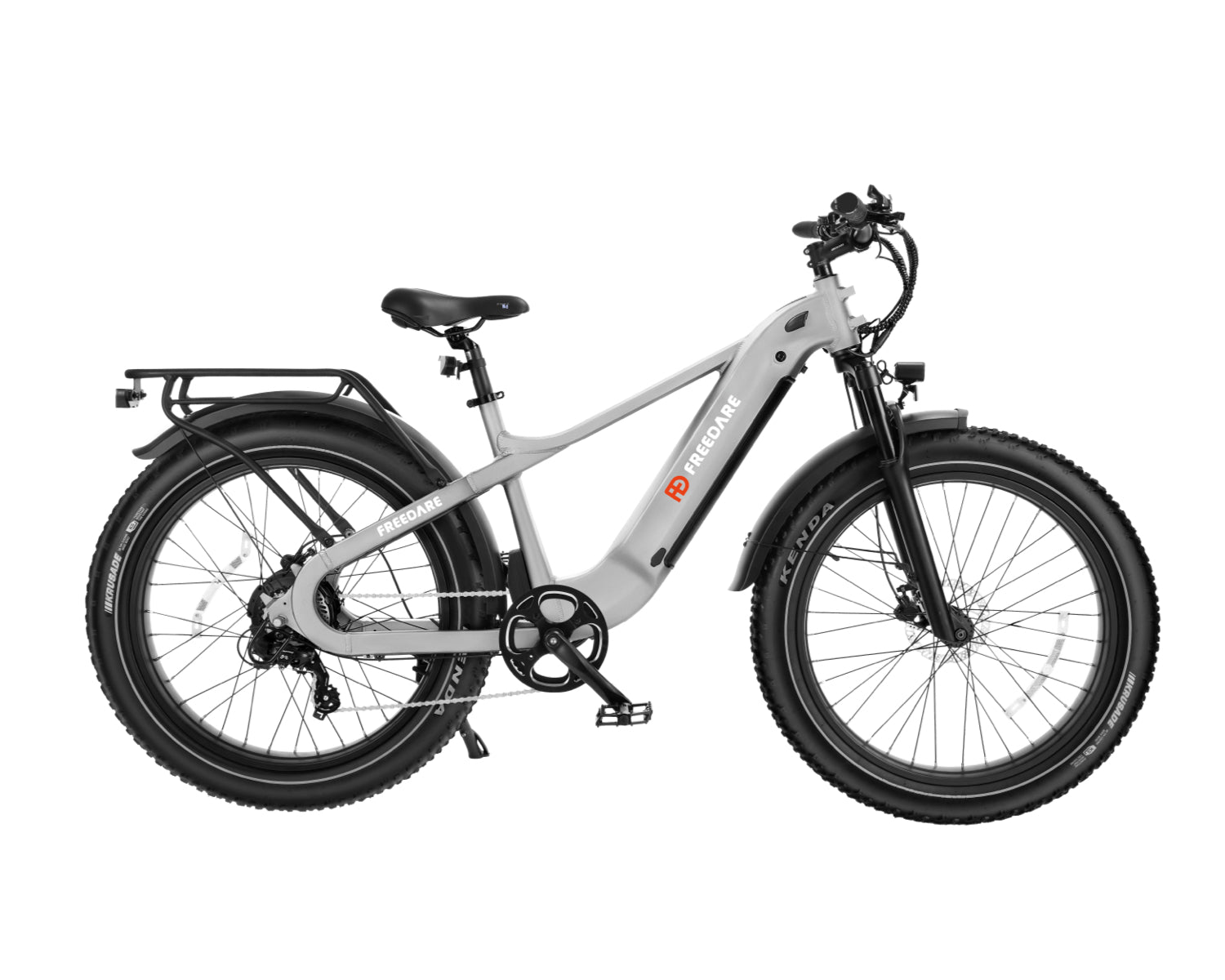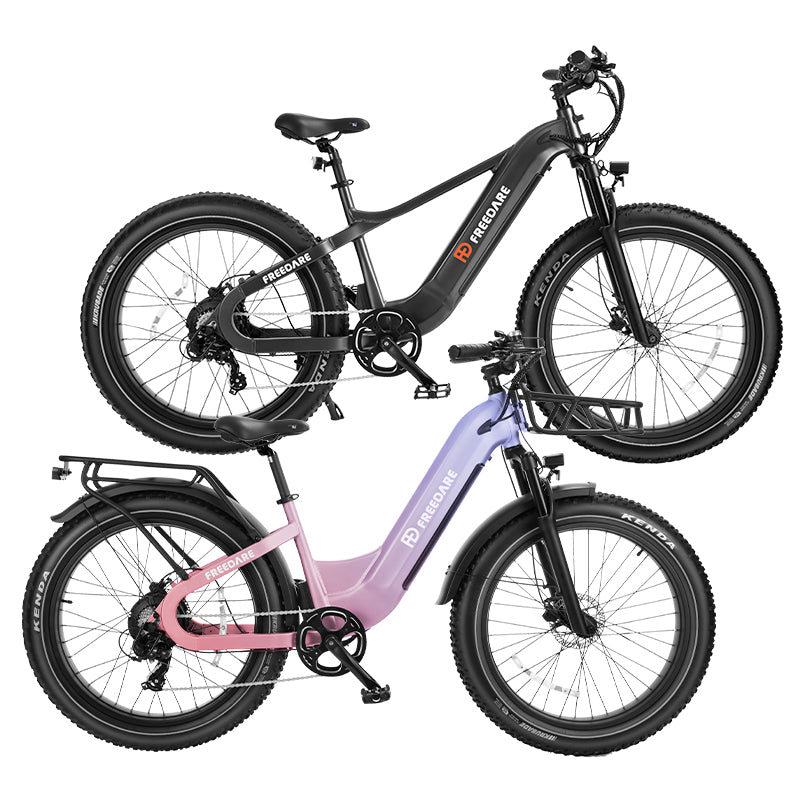What's the Difference Between Fat Tire and Thin Tire E-bike

There are different types of bicycle tires. Generally, different tires are configured on different bicycle models according to the riding needs and scenarios, including tire width, tire diameter, tire texture, and tire composition.
Tire size mainly depends on two dimensions: tire diameter and tire width. Tire diameter is determined by measuring the distance between the two outer ends of the tire, while tire width is determined by measuring the distance between the tire treads.
Common tire sizes for mountain bike : 26 x 1.95 / 27.5 x 1.95
Common tire sizes for road bike : 25 x 700c / 28 x 700c
Bicycle tire generally include the following:
1. Clincher tires (embedded tires), which must be used with inner tubes, are also our most common bicycle tires.
2. Tubular tires. Tubular tires are made by attaching tire treads to a sewn casing and then bonding them to the wheels with glue. They are lighter and have better impact resistance. The disadvantages are that it is expensive, difficult to install, and cannot be repaired quickly.
3. Tubeless tires: Tubeless tires have no inner tube, also known as "low-pressure tires" and "pneumatic tires". Tubeless tires have high elasticity and wear resistance. However, compared with other types of tires, they are heavier. Once a tubeless tire is punctured and leaked, it will be more troublesome to repair. If a large puncture hole or tear damage occurs, it will be scrapped directly.
4. Mountain bike tires have good road-holding ability and certain shock-absorbing effect. They can be used for ordinary mountain off-road and road riding. They are relatively versatile mountain bike tires. The tires have anti-skid texture. The tread pattern is the rubbery surface on the outside of the bike tire which makes contact with the ground.
The Freedare fat tire electric bike comes equipped with Kenda 26 x 4 mountain fat tires that comprise of an inner tube and outer tire. These kinds of tires have patterns on them, and the texture of the tire helps to improve its traction and grip, allowing it to adapt to various terrains and roads

Do you know the pro and cons of Fat Tire and Thin Tire?
Fat Tire:
Advantages: Fat tires include a large contact area between the tire and the ground, strong grip, and stable driving on slippery roads.
Disadvantages: Fat tires disadvantage include its heaviness, high resistance, low speed, and noise due to friction with the ground.
Thin Tire:
Advantages: Thin tires are lightweight, have low resistance, produce high speed and generate low noise from friction with the ground.
Disadvantages: Thin tires have less grip and are more prone to slipping on slippery roads.
Bicycle tires have a service life, but do you know the service life of bicycle tires?
There are various brands and models on the market. Different brands and different tires have different service life. Generally speaking, the service life for a normal bike:
Mountain bike tire life: about 4000km-5000km
Road tire life: about 6000km-8000km
Tested under the following conditions:
-Without additional load (rider's weight 65kg≈143lbs),
-On a standard road section (suburban road or relatively flat dirt road)
-In standard riding environment (road conditions are neither wet nor dry, up/down slope no more than 3%).
Would you like to know the estimated tire service life of a fat tire electric bike? Follow our blog for future updates on this topic.
- Tags: Ebike Tips
0 comments





